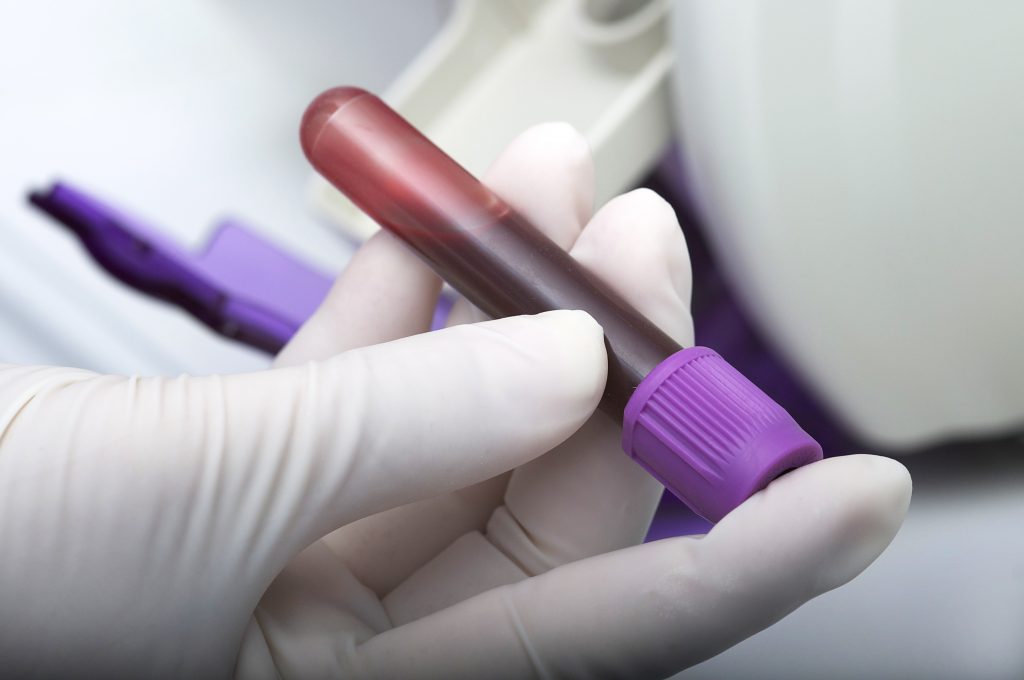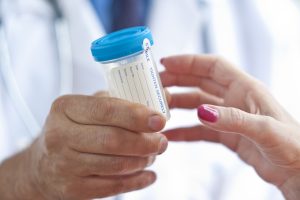Unlike diseases or conditions like diabetes or kidney stones, there is no one test for sepsis. However, your doctor makes the diagnosis by evaluating your symptoms, your history, and other tests. This can then lead your doctor to suspect you have sepsis.
Here are some of the tests that help determine if you do have sepsis.
Blood tests
Blood tests show healthcare providers many things about your body, from the possibility of an infection to how well your body’s organs work. These are some of the more common blood tests for patients who present with possible signs and symptoms of sepsis. None of these tests can diagnose sepsis, but when the test results are combined with information about your illness and a physical examination, they can help your doctor determine if you have sepsis:
 Complete blood count (CBC): A CBC is a common blood test. It measures how many white blood cells are circulating in your blood, among other things. White blood cells (also called leukocytes) fight bacteria, viruses, and other organisms your body identifies as a danger. A higher than normal amount of WBCs in your blood could mean that you have an infection. But too few WBCs can indicate you’re at risk of developing an infection.
Complete blood count (CBC): A CBC is a common blood test. It measures how many white blood cells are circulating in your blood, among other things. White blood cells (also called leukocytes) fight bacteria, viruses, and other organisms your body identifies as a danger. A higher than normal amount of WBCs in your blood could mean that you have an infection. But too few WBCs can indicate you’re at risk of developing an infection.
Monocyte distribution width (MDW): Monocytes are a type of white blood cell that increases in variability when an infection is present. MDW can be measured as part of the CBC.
Lactate: Your organs may produce lactic acid when they don’t receive enough oxygen. Intense exercise, heart failure, or serious infection, among other conditions can cause this. A high level of lactic acid caused by infection can be an important clue that you have sepsis.
C-reactive protein (CRP): Your body produces C-reactive protein is produced when there is inflammation. Several conditions can cause inflammation, including infections.
Blood culture: A blood culture test tries to identify what type of bacteria or fungi caused infection in the blood. Blood cultures are collected separately from other blood tests. They are usually taken more than once from different veins. It can take several days to get the results of a blood culture.
Prothrombin time and partial thromboplastin time (PT and PTT), platelet count, and d-dimer: Sepsis can have serious effects on blood clotting inside your body. If the PT and PTT are too high, it can indicate your blood is not clotting well. Platelets are tiny cells in your blood that help to form blood clots. If your platelet count is too low, it can mean your body is forming many unseen clots in tiny vessels all over your body. This can be an important sign of sepsis. The d-dimer test also indicates that blood clotting is happening in your body. The level of d-dimer can be high if you have one large clot, or it can be high if your body is making many tiny clots, as happens in sepsis.
Confirmatory/Diagnostic Tests
The following tests are what doctors call confirmatory or diagnostic tests. The test results give the medical team more information when they suspect sepsis. Patients and their doctors need to first recognize the clinical signs and symptoms for the tests to be ordered, however. If your doctor suspects sepsis, treatment (with fluids and antibiotics) should begin right away, while waiting for these confirmatory test results.
Endotoxin is a component of certain bacteria, released when the bacteria cell disintegrates. It should not be in your blood, so its presence confirms there are gram negative bacteria in your bloodstream, although this test cannot identify which type. This test is not a replacement for blood cultures.
Procalcitonin (PCT): Procalcitonin is a protein in your blood that rises if you have a bacterial infection. It cannot tell what type of bacterial infection you may have. If you have low levels of PCT, your doctor may rule out a bacterial infection. The infection may be caused by a viral infection or an illness not related to an infection.
More testing: urine tests

Urinalysis: Like the CBC, this simple urine test can tell your doctor a lot about your health, including if you have a urinary tract infection (UTI) or problems with your kidneys, such as a kidney stones. There is no special preparation to provide a urine sample for a urinalysis.
Urine culture: A urine culture can determine what bacteria or fungi causes a UTI. Urine for a culture must be obtained midstream. You need a special cleanser to wipe your genitals before you start urinating. Once the area is cleaned as instructed, urinate for a few seconds into the toilet and then place the container under the flow and collect the sample.
Testing for specific infections
In addition to blood and urine tests, your doctor may want you to undergo other tests to identify where the infection may be. Here are some examples:
Pneumonia
 Chest x-ray: A chest x-ray may show if you have pneumonia or damage around the lungs. A chest x-ray can’t tell your doctor what type of infection you have.
Chest x-ray: A chest x-ray may show if you have pneumonia or damage around the lungs. A chest x-ray can’t tell your doctor what type of infection you have.
Pulse oximetry. A pulse oximeter measures the oxygen saturation level of your blood. This tells your doctor how well your lungs are taking oxygen from the air and putting it into your bloodstream. The device is clipped on your finger or ear lobe. A light measure sthe oxygen levels as your blood flows past.
Sputum test. A sputum (phlegm) sample can show if there is an infection in your throat or lungs.
Meningitis
Computerized tomography (CT) scan: A CT scan of your head may show swelling or inflammation .
Magnetic resonance imaging (MRI): MRIs of your head check for swelling or inflammation.
Lumbar puncture: A lumbar puncture is also called a spinal tap. Your doctor uses a lumbar puncture for a sample of cerebral spinal fluid (CSF), fluid that circulates around your spine and brain. Your doctor inserts a needle into your spinal cord, in your lower back, to remove a small amount of fluid to send for testing.
Strep throat
There are two tests for strep throat, the rapid antigen test and the throat culture. For the rapid antigen test, your doctor or nurse uses a swab to get a sample from the back of your throat. This test takes only minutes. A throat culture is done the same way, but with a special swab. This goes to a lab, similar to a blood culture or urine culture.
Influenza
Doctors usually diagnose influenza by your symptoms. Rapid influenza diagnostic tests may indicate what type of influenza you have, but they are not always accurate. A cotton swab takes a sample from inside your nose or the back of your throat.
Skin infections
If your doctor suspects you have an infection on your skin, such as cellulitis or MRSA, a culture will help determine what type of infection is present. A small amount of saline solution is injected under your skin, then withdrawn.
The symptoms of early sepsis are vague and often easily dismissed. Any invasive procedures (such as a surgery) or an invasive devices (such as an IV), or any type of break in your skin (such as a bug bite or cut), should be mentioned if you experience any of the symptoms,. Testing can be frustrating when nothing specific turns up, but it’s the only way your team can decide how best to treat you.
Updated April 24, 2023.





























